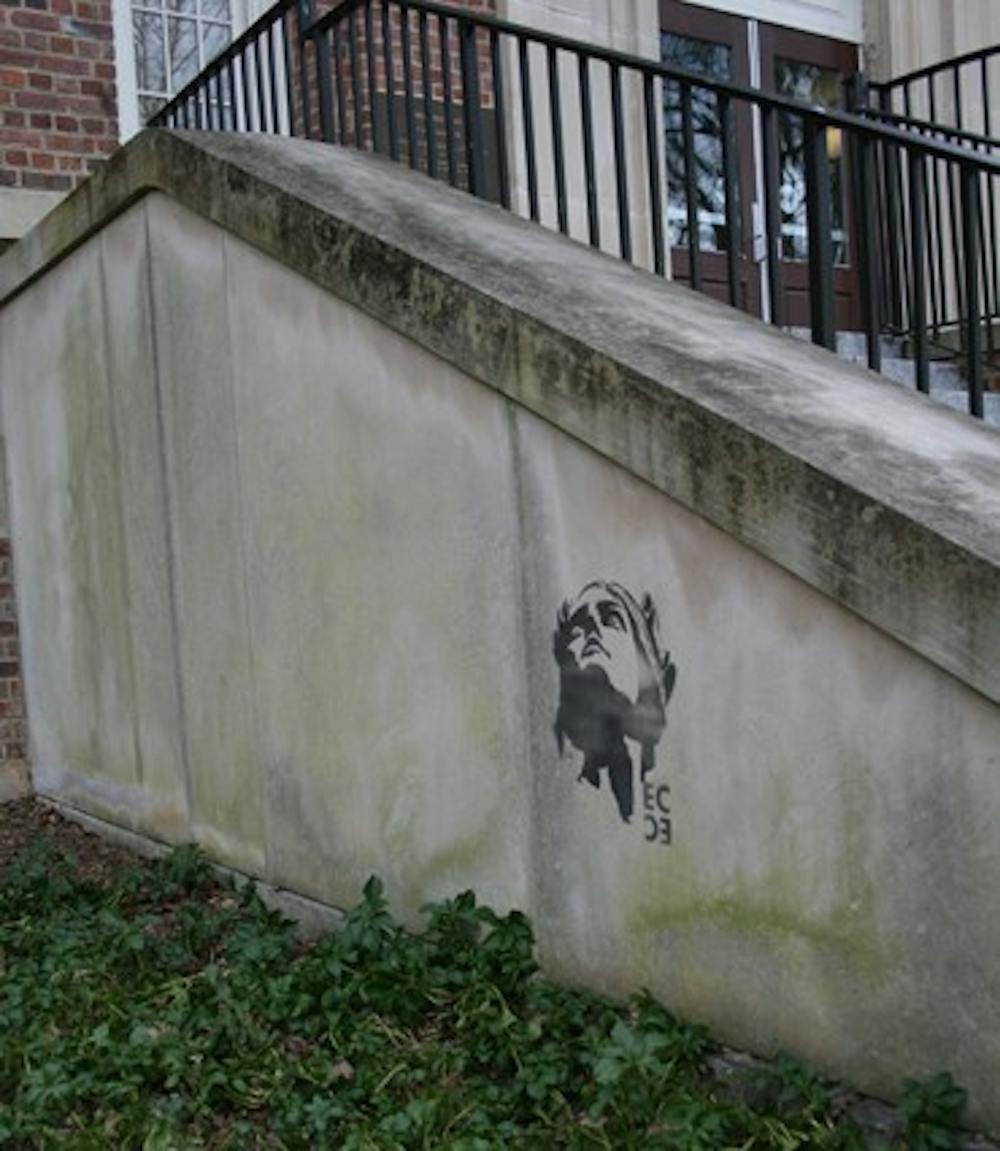In addition to the traditional vandals from rival schools and bathroom visitors with Sharpies, UNC’s public structures face a new threat: the stencil graffiti artist.
But unlike other nocturnal criminals, some stencil artists say they use the public surfaces as canvasses for the enjoyment of passersby, not just to share their favorite lyrics or boast about their exploits.
Stencil graffiti with tag names, used to show the artist while still keeping their identity secret, have appeared around campus in the past few years. The most noticeable tags are “EC” and “Garuda.”
The stencil movement decorating campus is inspired by European works.
French artist Blek Le Rat is credited as having originated this form of street art in the ’80s. It has recently gained worldwide attention from London street artist Banksy’s work.
The stencils appear more like an intricate painting than a piece produced with a bottle of spray paint. Blek Le Rat and Banksy exhibited subject matter that was just as controversial as the illegal nature of graffiti art.
For instance, one of Banksy’s works in New Orleans portrays soldiers passing a TV out of a window and into a grocery cart.
Chapel Hill stencil artist Garuda said he was first inspired to decorate a building after the Web site Stumbleupon.com led him to him to Banksy’s Web site.
Garuda scopes out exteriors during the day and returns at night with a notebook in hand and a hidden spray paint bottle. He sticks the carefully crafted stencil to the surface with spray glue, coats it with spray paint and sneaks away until he can admire his work in the daylight. Applying the stencil takes only a few minutes, but designing the carefully crafted stencil takes hours.
He estimates that he has five visible works around campus, though one drawing has been hidden by bushes planted in front of it, possibly strategically so, and another covered by a flier about swine flu.
“I don’t really care, if just one person walking by gets to enjoy it, it’s worth it,” Garuda said.
One of Garuda’s stencils shows Albert Hofmann, the developer of LSD, holding a rubber ducky instead of the LSD model Hofmann holds in his famous photograph. He also created a “Calvin and Hobbes” stencil and a stencil showing a monk on fire.
While the stencil artists may believe their works to be an asset to a barren wall, the drawings create a chore for UNC’s maintenance team.
The team power washes the wall with water and has to block the storm drains to prevent the paint chemicals from contaminating the runoff.
“You do see some artistic graffiti, but they’re not part of the campus scenery so we remove all of it,” said Brandon Thomas, communications director for facility services.
Artists must also constantly dodge law enforcement. For example, Montreal’s street artist Roadsworth claims he was charged with 53 counts of mischief in 2004, though he is now commissioned for his work.
From the perspective of Beth Grabowski, a professor in the art department, the skilled taggers have an internal battle regarding the legalities and legitimacy of their activities.
“This is part of what the artist has to contend with, whether they’re creating an interesting art or just graffiti or defacement,” she said.
The stencil artists must hide behind their pen names to avoid prosecution, and therefore lose the personal glory, but this can be a perk for the artist.
“I like being anonymous,” Garuda said. “It’s for everyone else to look at, and the attention doesn’t go to me personally. It’s the art.”
Contact the Arts Editor at artsdesk@unc.edu.
Art or vandalism?
Artists’ designs create havoc for maintenance

Steps of Murphey Hall


